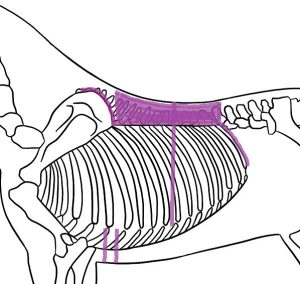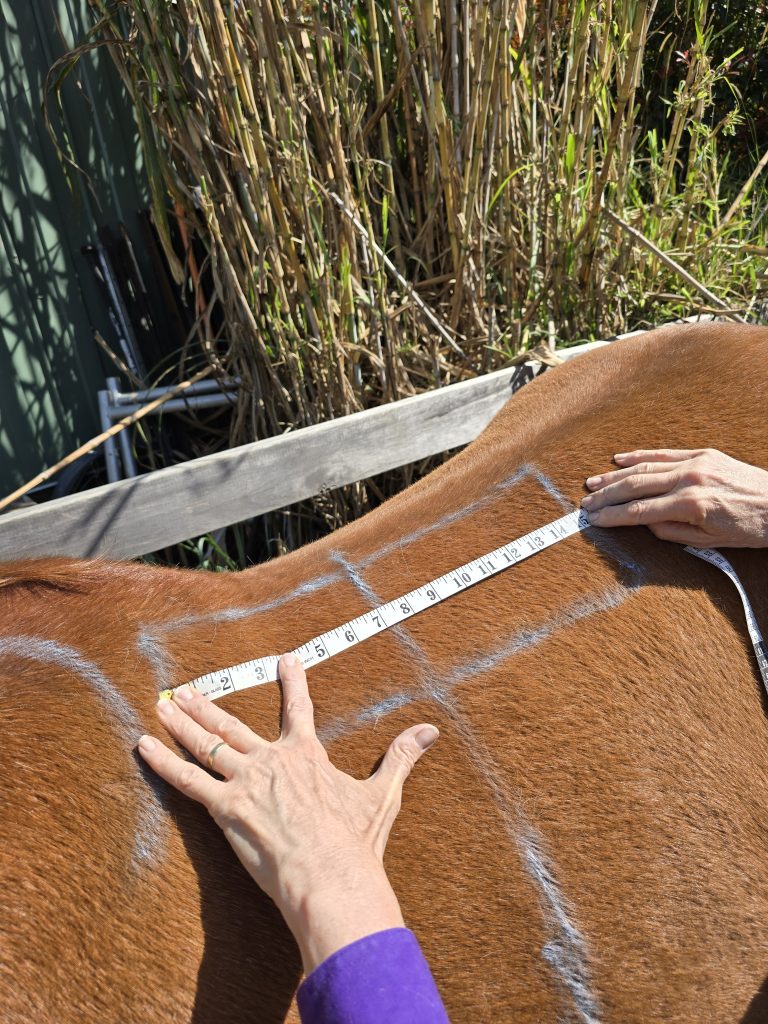Saddlefit Characteristics - Horse
Identifying your horse's unique saddlefit characteristics is the key to correct saddlefitting.
Saddlefit Characteristics of the Horse
During enquiries for a saddlefit appointment new customers often tell me that their saddle fits their horse. When I ask them how they know this they either can’t tell me or they say “my horse doesn’t have a sore back/get a sore back in this saddle” or that their saddlefitter or equine professional told them it fits. Horses are wonderful creatures and many of them suffer in silence only giving their owners quiet hints that something is not right in their world.
To quote Galadrial Billington from her excellent book “Saddlefitting Essentials for the Horse Lover”; ‘Your horse doesn’t know that the saddle should fit’. So be your horse’s advocate and educate yourself to;
- help your horse be comfortable in any saddle you try,
- be comfortable to ask questions and critique saddle fitters and equine professionals on saddlefit for your horse,
- save money by not buying saddles that do not match your horse’s unique saddlefit characteristics and don’t fit.
How do you know what your horse’s unique saddlefit characteristics are?
Even though there literally hundreds of thousands of combinations of horses and saddles there is only one way that you can identify a horse’s saddle fit area and thereby make an informed decision as whether a particular saddle may be suitable or not at all. To continue my passion to help as many horses as I can I have developed an online course to educate horse owners and riders on locating their horse’s unique saddlefit area.

Why do you need to identify the saddle fit characteristics?
Lets break it down, when you go shopping for clothes or shoes for yourself or your child you have a rough idea of what size you are looking for. Why is that? Well usually it is because you have bought clothes or shoes before and that is the size that you will look for. If you have never shopped for a saddle for your horse before how do you know what size he or she requires? Most horse owners can’t take their horse saddle shopping although ‘traillering in’ tack and saddlery stores may be available in some countries and even if you do how do you know what size to ask for or even how to or what measurements are required for your horse? Do you trust the saddle supplier to have your horse’s best interests at heart or do you want to know for sure that this saddle will do no harm to your horse and your partnership.
What is the unique saddle fit area of your horse?
It all starts with your horse’s skeleton as it is vital that no part of the weight bearing area of a saddle be in contact with any area that is not supported by the horse’s skeleton. The unique skeleton of your horse determines what width, length and balance point of a saddle that is required at the time of measurement regardless of the muscling or condition of your horse. At this point it is necessary of me to remind you that no horse should be ridden that is not biomechanically healthy enough to do so. It is imperative that you know what condition your horse is in both mentally and physically to be ready for ridden work. This article only refers to horses that are ready for ridden work both mentally and physically.
Once the horse is matured, and by this I mean that the bony growth plates of the skeleton have formed and closed and this will vary depending on the breed of the horse, then the angles of the skeleton will not change. It is the musculature and condition of the horse that varies and this can due to seasonal, dietary, injury and exercise conditions. By identifying and measuring your horse’s saddlefit characteristics you can keep abreast of any changes that could cause a saddlefit issue before it happens.
The saddlefit area

By identifying and measuring your horse’s unique saddlefit area every time you try a saddle you will be able to see immediately whether a saddle is a possible fit or a not-anyway-in-the-world-will-this-ever-fit-your-horse saddle thereby avoiding wasting time and money on saddles that don’t fit.
The horse’s saddlefit characteristics are:
- Length of Weight Bearing Area
- Widith of Weight Bearing Area including angle
- Width of paraspinal ligaments for channel clearance
- Balance Point
- Girthing Notch
However it all starts with the identification of the saddlefit area.
How do you know exactly what the weight bearing area is and how do you measure it?
This is where I want to share with you my self paced online course on how to identify your horse’s saddlefit area. My course – “Identifying The Horse’s Saddle Fit Area” covers what the saddlefit area is, how to identify it, measure it and analyse it and use it to compare any saddles that you want to try for a possible fit.
Further courses in my education program will address the other aspects of correct saddlefitting including identifying the saddle’s saddlefit characteristics and identifying a rider’s saddlefit characteristics which then complete the 3 pieces of the saddlefitting jigsaw puzzle.
Once you have identified, analysed and measured the saddlefit area then you can compare this to any saddle that you would like to try and tell at a glance if it is a possible fit or a not-a-chance fit. Should the saddle match up to all the horse’s saddlefit characteristics then this still doesn’t mean that it will be the correct fit for you and your horse. This is where the Holistic Saddlefit steps come into play. You can learn more about the steps required for a Holistic Saddlefit and correct saddlefit on my website. If you have any doubts about the fit of a saddle then you need to contact a suitable qualified and/or experienced equine professional.

This brings me to the other point that I addressed at the start of this page. How do you comfortably talk to, ask questions and critique saddle fitters and equine professionals on saddlefit for your horse? It all starts with identifying your horse’s saddlefit area, click here to access my course. Once you are clear on exactly what that is you can
- question any aspect of the saddlefit
- confidently discuss what the characteristics are for a saddle that may be a correct fit for your horse with saddle suppliers
- and check that what these equine professionals are saying and doing is correct for your horse’s unique saddlefit characteristics.
Remember your horse doesn’t know that the saddle should fit they only know if it is comfortable or causing them discomfort and they may or may not be able to tell you which it is. Be your horse’s advocate and get educated on Holistic Saddlefitting for your best happy horse/human relationship.
